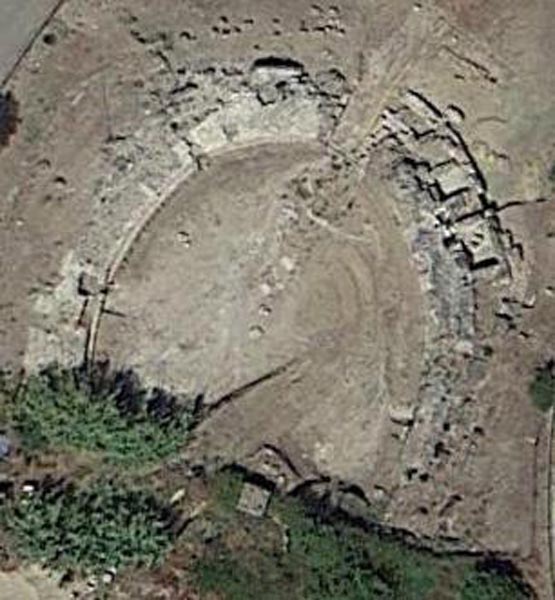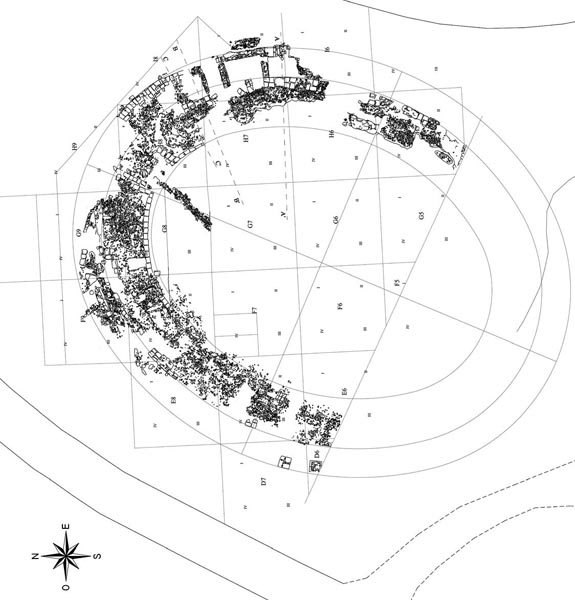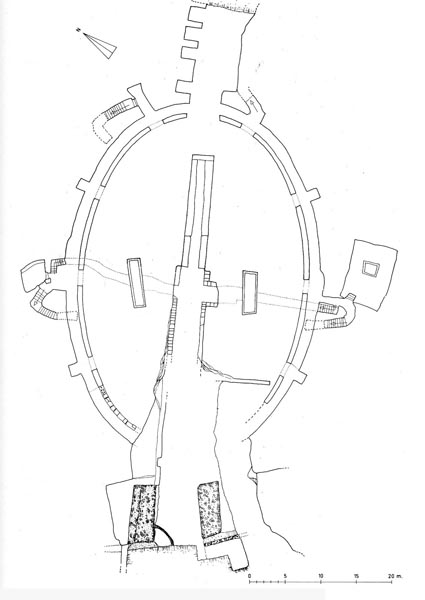The amphitheatre
A small valley called Apprezzau, a short distance to the South of the Roman town, holds the remains of the amphitheatre of Fordongianus (figg. 1-2).


Recent digs have identified two stages of building activity on the monument.
In the first, datable as to the Trajan period (98-117 A.D.), the amphitheatre had two opposite, curved embankments, divided into sectors by walls with large stone blocks; the base of the podium facing the area was also in blocks. Outside, the embankments were contained by a block pillar structure with intermediate spaces held by walls in cement mortar covered in opus vittatum, that is a surface alternating rows of tufa blocks and bricks.
In the second stage, of the Severan period (193-211 A.D.), at the start of the III cent. A.D., the amphitheatre saw its primitive front covered by a tunnel with open arches; moreover, a small room was built for an indeterminable cult.
We know of just a few amphitheatres in Sardinia: Cagliari, Nora, Sant’Antioco, Tharros and Fordongianus. The most imposing remains are undoubtedly those of the Cagliari one, large in size and built on the rock of the hill of Buoncammino (figs. 3-4).


Bibliografia
- G. BACCO et alii, Structures amphitheatri. A proposito dell’anfiteatro di Forum Traiani (Sardinia), in L’Africa Romana XVIII, Roma 2010, pp. 1371-1459.
- A. R. GHIOTTO, L’architettura romana nelle città della Sardegna, Roma 2004, pp. 81-96.
- P. PALA, Documenti inediti di Doro Levi sull’anfiteatro di Cagliari, in AA.VV., Omaggio a Doro Levi (Quaderni della Soprintendenza Archeologica di Sassari e Nuoro n. 19) Sassari 1994, pp. 131-166.

 VR
VR